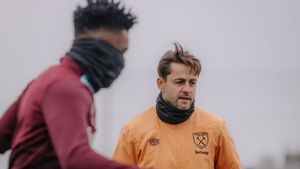Riding a bicycle around the environment with friends is a childhood activity that is timeless. However, even though children learn to ride bicycles from an early age, falling from a bicycle can still cause serious injury.
Fortunately, there is a bicycle helmet specially designed to minimize such risks. This is what you need to know about choosing the right bicycle helmet for your child, reported Very Well Family, Friday, April 14.
There are a number of ways to find out if the helmet is right for your child.
"Helms must be placed overhead in a flat position, and must not sway forwards, backs, or sides," said Cassandra Herring, director of child resident protection at the Safe Kids Worldwide.
Helmet straps must always bend, but don't be too tight. While the size of the helmet will be different from brand to brand, the best way to make sure you choose the right size is to measure the child's head circumference and find the size of the helmet with the appropriate circumference range.
From there, Safe Kids Worldwide recommends children to take the Helmet Match Test with three steps. First eye check. Position the helmet on the child's head. Ask the child to look up and he has to look at the lower edge of the helmet. The kink must be one to two fingers wide above the eyebrows.
Next is the ear check. Make sure the helmet strap forms a 'V' under the ear when tied. The strap must fit but comfortable. The last step is a mouth check, where you ask your child to open his mouth as wide as possible and ask if he feels a helmet holding his head. Otherwise, tighten the rope and make sure the gesture is flat with the skin.
Children should wear helmets for any wheel riding activity, not just riding bicycles. According to the CPSC, there are various types of helmets for different activities designed specifically to protect the head from the most common collisions that occur. Bicycles provide adequate protection for driving scooters, as well as roller skating, or in-line skating.
But if your child is also skateboarding or longboarding, he should have a CPSC-certified skateboarding helmet for this activity. The helmet tends to cover more back of the head (because it falls backwards more often on skateboards than cycling).
The same applies to BMX bikes that must have BMX helmets, and downhill mountain bikes that must have downhill helmets.
Cycling helmets are very important to protect children from head and brain injuries that can damage brain development. So, make sure the children's helmets are right and not too big or too small. You should also consider the activities that children follow most often and choose helmets that are specially designed to protect them from the most likely injuries that occur in the sport they follow.
The English, Chinese, Japanese, Arabic, and French versions are automatically generated by the AI. So there may still be inaccuracies in translating, please always see Indonesian as our main language. (system supported by DigitalSiber.id)













